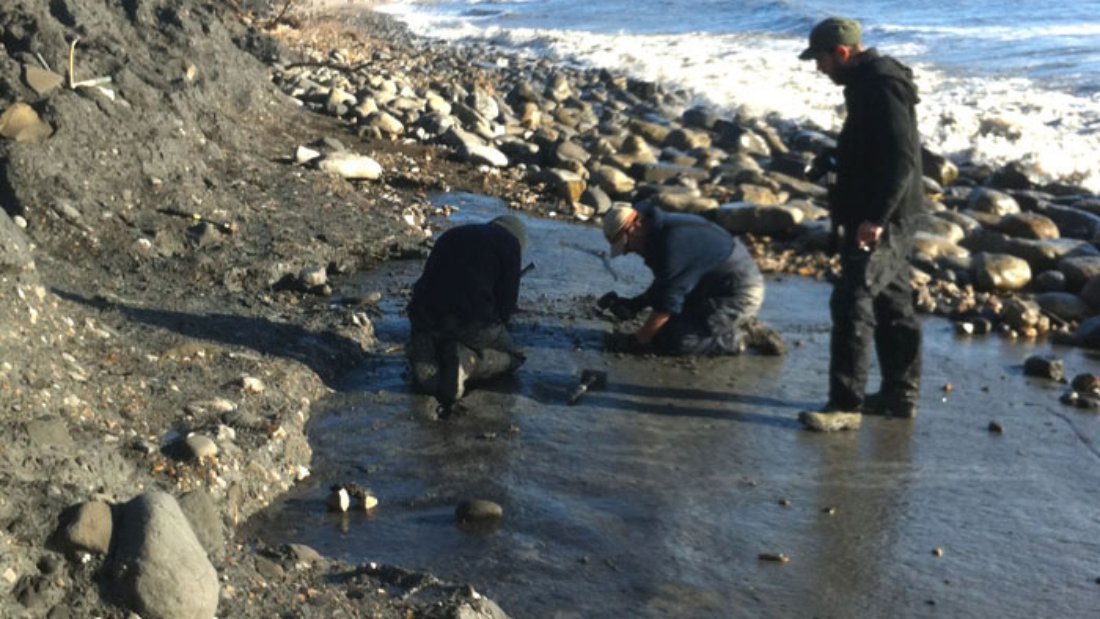Jurassic Spring Watch 2020.
This Easter has had the best weather for years with blue skies and a sea glistening like the Mediterranean. This could have been one of the busiest Easter’s ever, on the Jurassic Coast.
Unfortunately, in January in a small town in China a person was tempted by a nice meal of fried bats and noodles and managed to achieve in that one meal a world catastrophe of huge consequences.
How the dinosaurs must chuckle, at least their end had come from space where as mankind’s could come from a meal of bats.
The beaches are empty the shops are closed and I am in an enforced hibernation along with most of the world.
I am lucky; I live near the sea and take my exercise walks along the cliffs of the Jurassic Coast. The beach to the east of Charmouth, is still covered in sand deposited during the winter storms. The cliffs have had recent falls and there are accumulated mud and rocks at the base. On my slow walk along the beach there are plenty of belemnites and ammonites to pick up. On the beach are the tracks of an electric wheel chair. I do not know who this person is but I am amazed how far along he is able to drive.
At Charmouth, the Heritage Centre, Fossil shop and car parks are closed and it is very quiet. While at Lyme Regis the May Bank holiday Fossil Festival has been cancelled and in the town only the supermarket is open. We went for a walk round the Cobb (harbour) and we were the only people there.
The topping stone on the High Wall of the harbour was built from imported Portland Stone, in 1837. In the stone can be found ammonites (Titanites giganteus) and plenty of fossil bi-valves (Trigonia marariticea).
On Monmouth Beach (to the West of Lyme Regis) the winter storms have destroyed some of the “Ammonite Pavement” and frequently the limestone ledge of ammonites is covered in shingle.
It is strange to walk round a ghost town. The last time Lyme Regis was this quiet was in July 1348 when on 7th July a small cargo ship arrived at the harbour in Weymouth and introduced the first recorded case of the “Bubonic Plague” to Britain. I’m not sure how long their “lock-down” lasted!
(When my walks do resume please note they are not group walks but small individual family or for couples. I will address you with a loudhailerand keep a safe distance……..)
Nigel Clarke

“Well there is just the two of us!”


